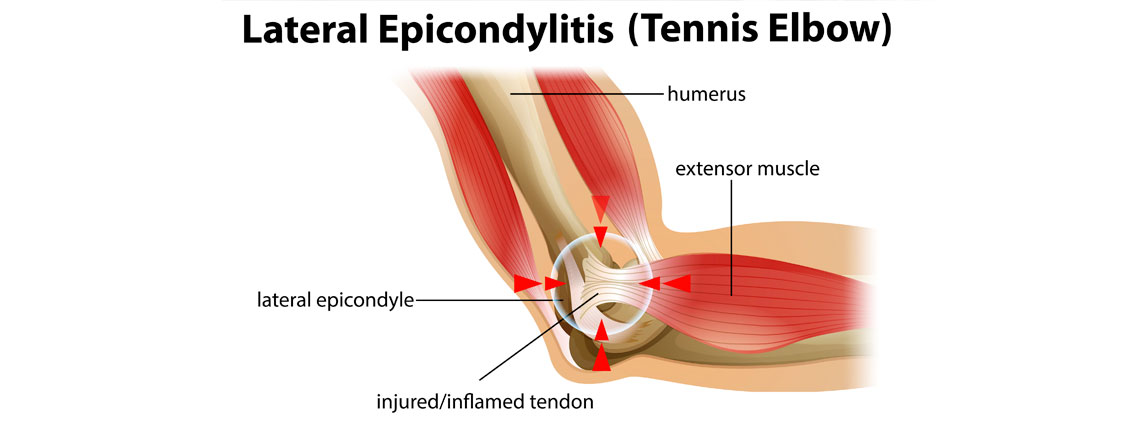
Tennis Elbow
Overview
As you might be able to tell from the name, tennis elbow is common in activities like playing tennis or other racquet sports due to frequent movements causing overuse. This condition affects anywhere from 10-50% of tennis players during their careers and 1-3% of the overall United States population. Repetitive motion causes damage to your muscles and tendons in your forearm.
Tennis elbow is the inflammation of the tendons in the forearm muscles located on the outside of the elbow. Studies show microscopic tears to the extensor carpi radialis brevis (ECRB) muscle, which stabilizes the wrist when the elbow is straight, causing inflammation and pain in the elbow. In tennis, you do this motion when you return the ball using a groundstroke. If you have tennis elbow you may have burning pain on the outside of your elbow, weakness when gripping an object, pain at night, and tenderness in your elbow. You may also notice that your pain gets worse with increased forearm activity like turning a wrench or shaking hands. In many cases, your dominant hand is affected.
Athletes aren’t the only people who have a higher chance of having this condition. Painters, plumbers, cooks, auto workers, butchers, and carpenters are at an increased chance of developing this condition, too. The average age of those with tennis elbow is 30-50 years old.
Nonsurgical Treatment Options for Tennis Elbow
There are several nonsurgical options to try before exploring surgical treatment.
- Rest. Rest your arm for several weeks which means stopping heavy participation in sports or activities that cause your painful symptoms.
- Check Equipment. If you’re an athlete, you should check your equipment to ensure the proper fit. It’s shown that looser-strung racquets don’t require your forearm to work as hard.
- Anti-inflammatory Medication. Taking medicine such as ibuprofen or naproxen can reduce pain and swelling.
- Physical Therapy. Your physical therapist may suggest several exercises designed to strengthen the muscles in your forearm.
- Steroid Injection. A stronger anti-inflammatory injection reduces inflammation and pain, but the effects are only temporary.
- Brace.A brace could reduce your symptoms. Place the brace over the back of your forearm which will cause your muscles to rest.
- Platelet-Rich Plasma (PRP). This is a treatment used to improve the environment of the tissue by taking a small amount of blood from your arm, spinning it (centrifuging it) to gather the platelets. Platelets contain a high concentration of growth factors. Growth factors injected into the injured area aid in improving the environment around the tissue.
- Steroid Injections.A powerful anti-inflammatory injection in the painful area relieves your symptoms.

